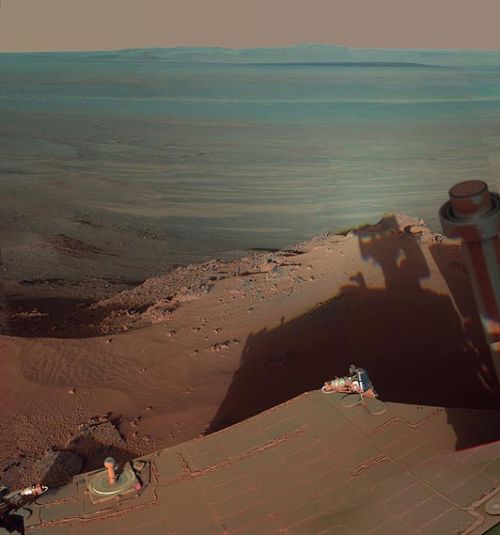A Wizard’s Manual Can Come In All Shapes And Sizes. For Those Who Know Which Links To Click, There
A wizard’s Manual can come in all shapes and sizes. For those who know which links to click, there is a section of Wikipedia where the globe puzzle is full and finished. Articles in this section never have a problem with trolls or misinformation, and cover subjects ranging from a listing of every Power to a deep dive on echolocation spells.
More Posts from Outofambit and Others
What Have We Learned About Pluto?
This month (March 2016), in the journal Science, New Horizons scientists have authored the first comprehensive set of papers describing results from last summer’s Pluto system flyby. These detailed papers completely transform our view of Pluto and reveal the former “astronomer’s planet” to be a real world with diverse and active geology, exotic surface chemistry, a complex atmosphere, puzzling interaction with the sun and an intriguing system of small moons.
Here’s a breakdown of what we’ve learned about Pluto:

1. Pluto has been geologically active throughout the past 4 billion years. The age-dating of Pluto’s surface through crater counts has revealed that Pluto has been geologically active throughout the past 4 billion years. Further, the surface of Pluto’s informally-named Sputnik Planum, a massive ice plain larger than Texas, is devoid of any detectable craters and estimated to be geologically young – no more than 10 million years old.

2. Pluto’s moon Charon has been discovered to have an ancient surface. As an example, the great expanse of smooth plains on Charon is likely a vast cryovolcanic flow or flows that erupted onto Charon’s surface about 4 billion years ago. These flows are likely related to the freezing of an internal ocean that globally ruptured Charon’s crust.

3. Pluto’s surface has many types of terrain. The distribution of compositional units on Pluto’s surface – from nitrogen-rich, to methane-rich, to water-rich – has been found to be surprisingly complex, creating puzzles for understanding Pluto’s climate and geologic history. The variations in surface composition on Pluto are unprecedented elsewhere in the outer solar system.

4. Pluto’s atmosphere is colder than we thought. Pluto’s upper atmospheric temperature has been found to be much colder (by about 70 degrees Fahrenheit) than had been thought from Earth-based studies, with important implications for its atmospheric escape rate. Why the atmosphere is colder is a mystery.

5. We know what Pluto’s atmosphere is made of. The New Horizon spacecraft made observations of sunlight passing through Pluto’s atmosphere. We see absorption features that indicate an atmosphere made up of nitrogen (like Earth’s) with methane, acetylene and ethylene as minor constituents.

6. We might have an idea for how Pluto’s haze formed. For first time, a plausible mechanism for forming Pluto’s atmospheric haze layers has been found. This mechanism involves the concentration of haze particles by atmospheric buoyancy waves, created by winds blowing over Pluto’s mountainous topography. Pluto’s haze extends hundreds of kilometers into space, and embedded within it are over 20 very thin, but far brighter, layers.

7. There isn’t much dust around Pluto. Before the flyby, there was concern that a small piece of debris (even the size of a grain of sand) could cause great damage to (or even destroy) the spacecraft. But the Venetia Burney Student Dust Counter (an instrument on the New Horizons spacecraft) only counted a single dust particle within five days of the flyby. This is similar to the density of dust particles in free space in the outer solar system – about 6 particles per cubic mile – showing that the region around Pluto is, in fact, not filled with debris.

8. Pluto’s atmosphere is smaller than we expected. The uppermost region of Pluto’s atmosphere is slowly escaping to space. The hotter the upper atmosphere, the more rapid the gasses escape. The lower the planet’s mass, the lower the gravity, and the faster the atmospheric loss. As molecules escape, they are ionized by solar ultraviolet light. Once ionized, the charged molecules are carried away by the solar wind. As more Pluto-genic material is picked up by the solar wind, the more the solar wind is slowed down and deflected around Pluto. So - the net result is a region (the interaction region), which is like a blunt cone pointed toward the sun, where the escaping ionized gasses interact with the solar wind. The cone extends to a distance about 6 Pluto radii from Pluto toward the sun, but extend behind Pluto at least 400 Pluto radii behind Pluto - like a wake behind the dwarf planet.

9. Pluto’s moons are brighter than we thought. The high albedos (reflectiveness) of Pluto’s small satellites (moons) – about 50 to 80 percent – are entirely different from the much lower reflectiveness of the small bodies in the general Kuiper Belt population, which range from about 5 to 20 percent. This difference lends further support to the idea that these moons were not captured from the general Kuiper Belt population, but instead formed by the collection of material produced in the aftermath of the giant collision that created the entire Pluto satellite system.
Make sure to follow us on Tumblr for your regular dose of space: http://nasa.tumblr.com


“But then she was a dancer. Dancers are tough.” -“The Wizard’s Dilemma,” Diane Duane, (x) (x) Dedicated to Betty Callahan.



The Journey to Mars Begins Tomorrow
NASA is preparing for the first test flight of the Orion crew vehicle set for an unmanned launch on Dec. 4 at 7:05 a.m. EST from Cape Canaveral, Florida.
The Orion spacecraft is designed to eventually take astronauts beyond low-Earth orbit to destinations never explored by humans. It will serve as the exploration vehicle that will carry the crew to distant planetary bodies, provide emergency abort capability, sustain the crew during space travel, and provide safe reentry from deep space.
This mission is the first of three trial runs that the Orion mission must overcome before NASA deems it safe enough for human space travel.
The next test flights in 2018 and 2021 will use NASA’s Space Launch System rocket (SLS), which is currently in development. When it’s finished, SLS will be the most powerful rocket ever built, boasting even more thrust than the Saturn V booster that blasted astronauts toward the moon in the Apollo era.
The spacecraft will launch atop a Delta IV Heavy, a rocket built and operated by United Launch Alliance. While this launch vehicle will allow Orion to reach an altitude high enough to meet the objectives for this test, a much larger, human-rated rocket will be needed for the vast distances of future exploration missions.
Exploration Flight Test-1, will mark the farthest distance traveled by a human spaceflight vehicle since 1972 made by Apollo 17.
During its grueling four-and-half-hour test mission, NASA’s Orion space capsule must shoot 3,600 miles away from Earth (15 times higher than the International Space Station!), orbit the planet twice, and brave a thick belt of cosmic radiation.
Upon re-entry it must deploy 11 parachutes to slow down from 20,000 miles per hour to 20 mph, while withstanding 4,000-degree Fahrenheit temperatures before plunging into the Pacific Ocean.
Check out these incredible photos from the development and testing of the spacecraft.
Countdown, launch and mission coverage will begin at 4:30 a.m. on NASA TV which is available on air and streaming at nasa.gov/nasatv






Blue
I’m upset because I want to change the world but the world is too big and people are too mean
I have this weird theory that some people are drawn to each other because their atoms were near each other when the universe was created and over time the same atoms keep coming back together

Reasons the Young Wizards series is wonderful: there’s a scene that can be described as “Tiny kitten Roasts Satan” and it’s the best thing ever
-
 alb-back liked this · 6 years ago
alb-back liked this · 6 years ago -
 jblatherings liked this · 6 years ago
jblatherings liked this · 6 years ago -
 rukbat3 liked this · 6 years ago
rukbat3 liked this · 6 years ago -
 yavosaur liked this · 6 years ago
yavosaur liked this · 6 years ago -
 jazzhandsmcleg liked this · 6 years ago
jazzhandsmcleg liked this · 6 years ago -
 sunrisenebula liked this · 6 years ago
sunrisenebula liked this · 6 years ago -
 autisticace reblogged this · 6 years ago
autisticace reblogged this · 6 years ago -
 autisticace liked this · 6 years ago
autisticace liked this · 6 years ago -
 badgerhuan liked this · 6 years ago
badgerhuan liked this · 6 years ago -
 wittyusernamed reblogged this · 6 years ago
wittyusernamed reblogged this · 6 years ago -
 wittyusernamed liked this · 6 years ago
wittyusernamed liked this · 6 years ago -
 bellatrixmld liked this · 6 years ago
bellatrixmld liked this · 6 years ago -
 devieklutz liked this · 6 years ago
devieklutz liked this · 6 years ago -
 bold-sartorial-statement liked this · 6 years ago
bold-sartorial-statement liked this · 6 years ago -
 gerrykeay liked this · 6 years ago
gerrykeay liked this · 6 years ago -
 dubiousculturalartifact reblogged this · 6 years ago
dubiousculturalartifact reblogged this · 6 years ago -
 sharvil1 reblogged this · 6 years ago
sharvil1 reblogged this · 6 years ago -
 merylmaddy89 liked this · 6 years ago
merylmaddy89 liked this · 6 years ago -
 kissmeagainarthas liked this · 6 years ago
kissmeagainarthas liked this · 6 years ago -
 toastymeister liked this · 6 years ago
toastymeister liked this · 6 years ago -
 semiotomatics liked this · 6 years ago
semiotomatics liked this · 6 years ago -
 dubiousculturalartifact liked this · 6 years ago
dubiousculturalartifact liked this · 6 years ago -
 outofambit reblogged this · 6 years ago
outofambit reblogged this · 6 years ago -
 blame-my-muses reblogged this · 6 years ago
blame-my-muses reblogged this · 6 years ago -
 thewordscomealive reblogged this · 6 years ago
thewordscomealive reblogged this · 6 years ago -
 thewordscomealive liked this · 6 years ago
thewordscomealive liked this · 6 years ago -
 minor-wizardries reblogged this · 6 years ago
minor-wizardries reblogged this · 6 years ago
A personal temporospatial claudication for Young Wizards fandom-related posts and general space nonsense.
288 posts


